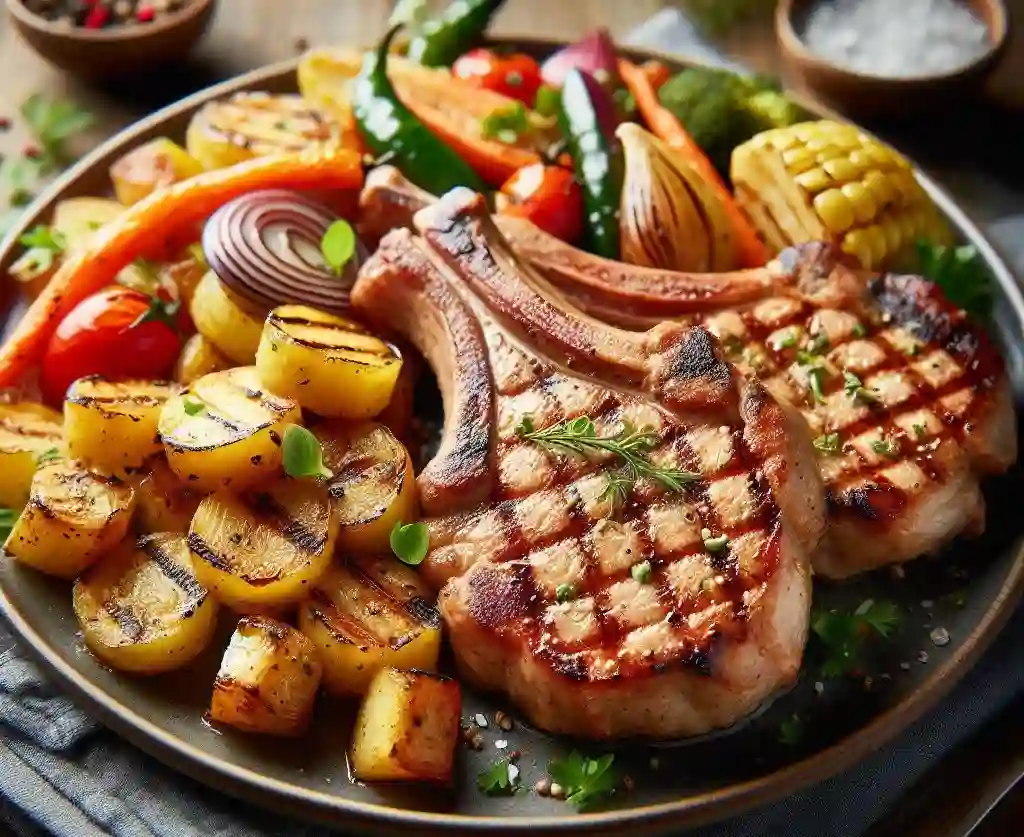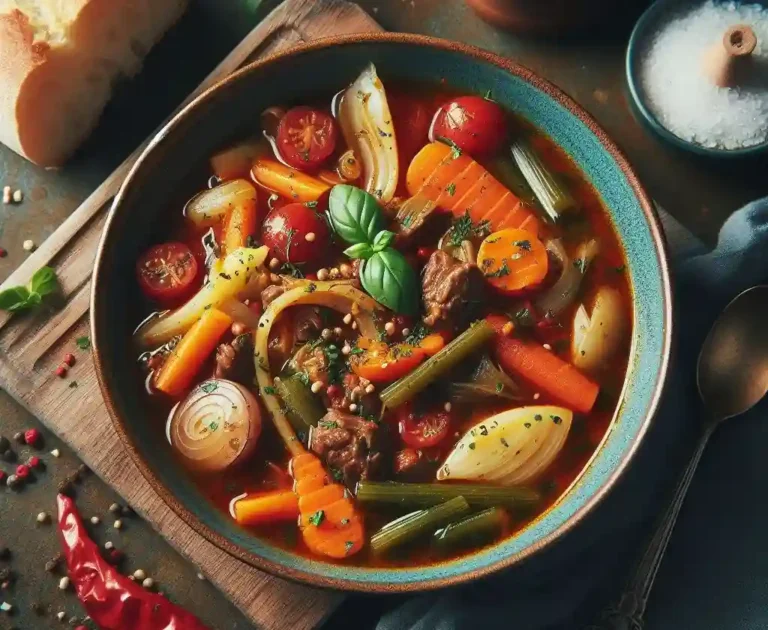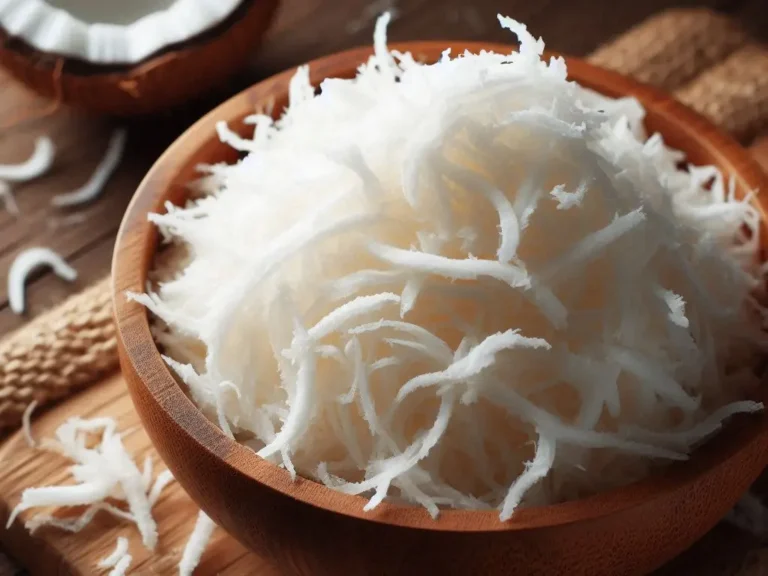How to Cook Tender Boneless Pork Chops: The Tender Truth
Cooking tender boneless pork chops can be a challenge, but with the right techniques and a bit of practice, you can achieve juicy, flavorful results every time.
Whether you’re a seasoned cook or a kitchen newbie, mastering the art of cooking tender pork chops is a skill worth acquiring.
How to Cook Tender Boneless Pork Chops: A Quick Overview
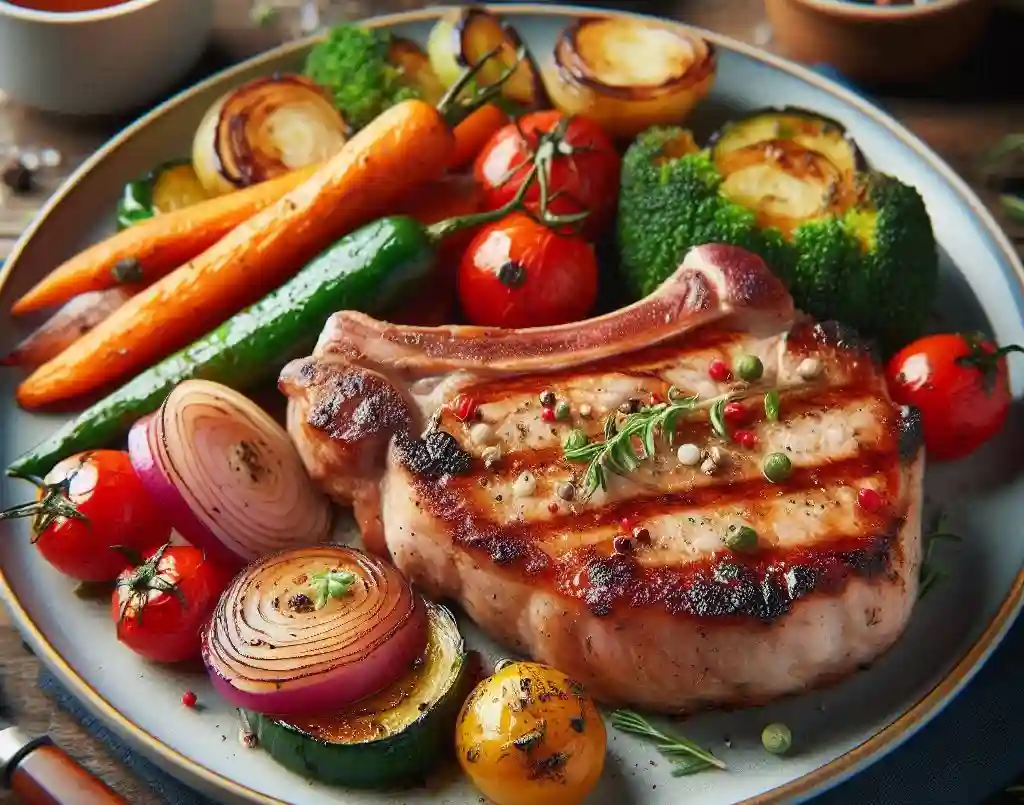
Choosing the Right Pork Chops
- Opt for thick-cut pork chops (at least 1-1.5 inches thick) for better retention of juices
- Look for pork chops with a good balance of marbling (fat distribution) for tenderness and flavor
Preparation
- Bring the pork chops to room temperature before cooking to ensure even cooking
- Pat the pork chops dry with paper towels to remove excess moisture
- Season the pork chops with your desired seasonings, such as salt, pepper, and any other herbs or spices
- Pan-Seared Pork Chops
- Heat a skillet over medium-high heat with a small amount of oil
- Sear the pork chops for 2-3 minutes per side, or until browned
- Finish cooking in the oven at 400°F (200°C) for 10-15 minutes, or until cooked through
- Oven-Roasted Pork Chops
- Preheat the oven to 400°F (200°C)
- Place the pork chops on a baking sheet lined with parchment paper
- Roast for 15-20 minutes, or until cooked through
- Grilled Pork Chops
- Preheat the grill to medium-high heat
- Grill the pork chops for 4-5 minutes per side, or until cooked through
Cooking to the Right Temperature
- Use a meat thermometer to ensure the pork chops reach a safe internal temperature of 145°F (63°C)
- Let the pork chops rest for 5 minutes before serving to allow the juices to redistribute
Tips for Tender Pork Chops
- Don’t overcrowd the skillet or grill, as this can lower the temperature and lead to tough pork chops
- Don’t overcook the pork chops, as this can cause them to dry out
- Let the pork chops rest before serving to allow the juices to redistribute and the meat to relax
Selecting the Best Boneless Pork Chops for Tender Results
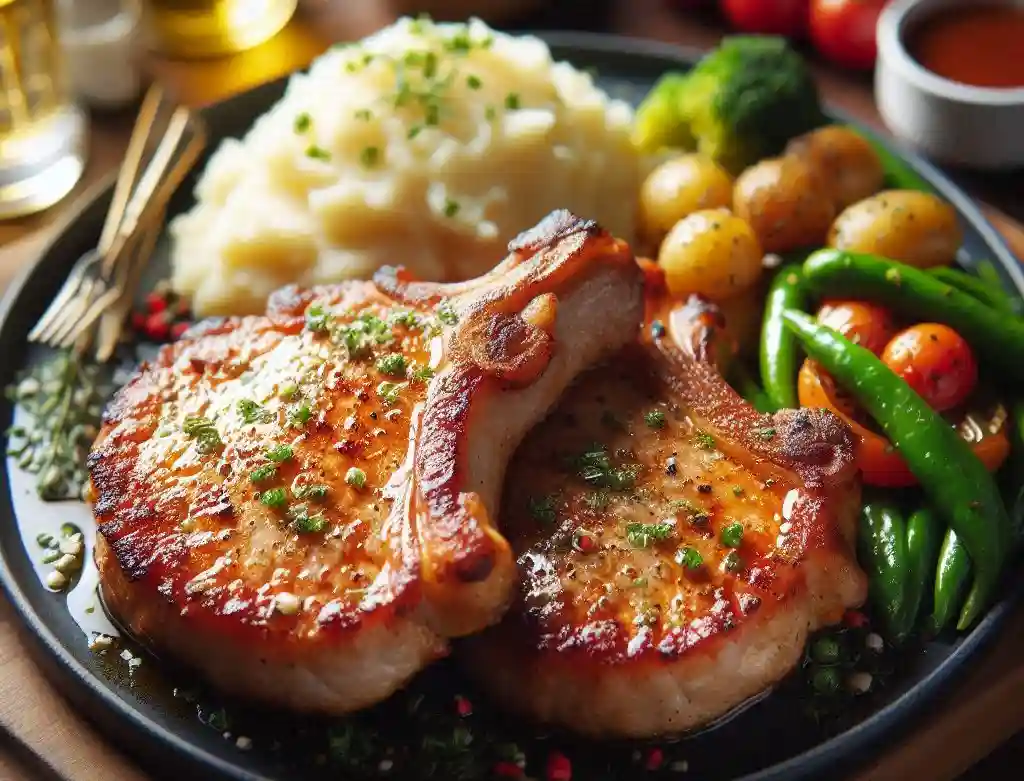
Understanding Pork Chop Cuts
- Loin Chops: Cut from the back of the pig, these chops are leaner and more tender
- Rib Chops: Cut from the rib section, these chops are fattier and more flavorful
- Sirloin Chops: Cut from the rear section, these chops are leaner and more tender
What to Look for in Boneless Pork Chops
- Thickness: Opt for thicker chops (at least 1-1.5 inches) for better retention of juices
- Marbling: Look for chops with a good balance of marbling (fat distribution) for tenderness and flavor
- Color: Choose chops with a pinkish-red color, as they will be more tender and juicy
- Grading: Opt for chops with a higher grade, such as “Prime” or “Choice”, for better quality and tenderness
Types of Pork Chops to Avoid
- Thin Chops: Avoid chops that are too thin, as they can dry out easily
- Chops with Excess Fat: Avoid chops with excessive fat, as they can be tough and chewy
- Chops with Dark Meat: Avoid chops with dark meat, as they can be tougher and less tender
Certifications and Labels to Look for
- USDA Organic: Ensures the pigs were raised without antibiotics or hormones
- Hormone-Free: Ensures the pigs were not given hormones to promote growth
- Free-Range: Ensures the pigs were raised in a more natural environment
- Heritage Breed: Ensures the pigs were raised from heritage breeds, known for their tenderness and flavor
Where to Buy the Best Boneless Pork Chops
- Butcher Shops: Often carry high-quality, locally sourced pork chops
- Specialty Meat Markets: Carry a wide selection of premium pork chops
- High-End Grocery Stores: Often carry premium pork chops from reputable sources
- Farmers’ Markets: May carry locally sourced, high-quality pork chops
How to Trim and Season Boneless Pork Chops for Optimal Flavor
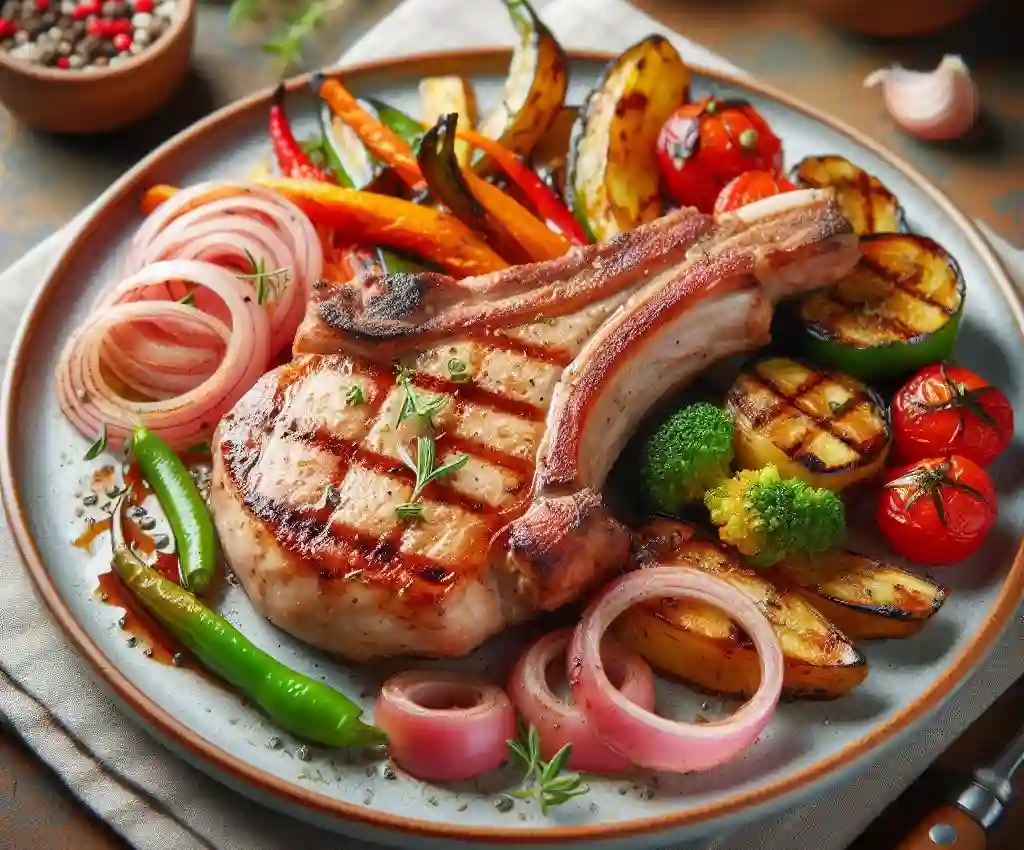
Trimming Boneless Pork Chops
- Remove excess fat: Trim any excess fat from the edges of the pork chops to prevent flare-ups during cooking
- Remove silver skin: Remove any silver skin (connective tissue) from the pork chops to improve tenderness
- Square the edges: Trim the edges of the pork chops to create a uniform shape and prevent curling during cooking
Seasoning Boneless Pork Chops
- Dry brining: Rub the pork chops with kosher salt and let them sit for 30 minutes to 1 hour to enhance flavor and tenderness
- Wet marinades: Marinate the pork chops in a mixture of olive oil, acid (such as vinegar or lemon juice), and spices for 30 minutes to 2 hours
- Dry rubs: Rub the pork chops with a mixture of spices, herbs, and aromatics (such as garlic and onion powder) for added flavor
- Simple seasoning: Sprinkle the pork chops with salt, pepper, and any other desired seasonings (such as paprika or thyme) for a quick and easy flavor boost
Tips for Optimal Flavor
- Use fresh ingredients: Use fresh herbs and spices for the best flavor
- Don’t over-season: Avoid over-seasoning the pork chops, as this can overpower the natural flavor of the meat
- Let it sit: Let the seasoned pork chops sit for 30 minutes to 1 hour to allow the flavors to penetrate the meat
- Don’t press down: Avoid pressing down on the pork chops with your spatula during cooking, as this can squeeze out juices and make the meat tough
Popular Seasoning Combinations
- Garlic and herbs: Mix minced garlic with chopped fresh herbs (such as thyme, rosemary, or parsley) for a savory flavor
- Spicy: Mix chili powder, cumin, and smoked paprika for a spicy, smoky flavor
- Lemon and pepper: Mix lemon zest, black pepper, and chopped fresh parsley for a bright, citrusy flavor
- Asian-inspired: Mix soy sauce, honey, and grated ginger for a sweet and savory flavor
How Salting Can Make Your Pork Chops Unbelievably Tender
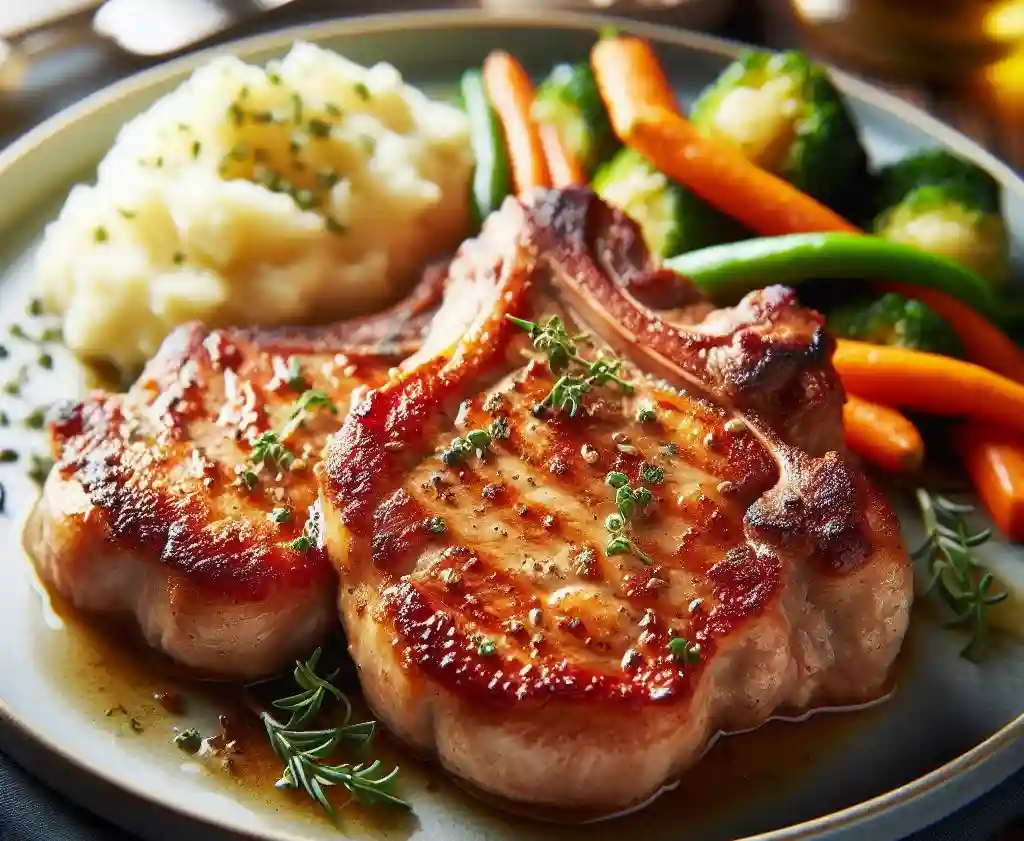
The Science of Salting
- Osmosis: Salt helps to break down the proteins in the meat, allowing it to retain more moisture and become more tender
- Denaturation: Salt helps to denature the proteins in the meat, making it more tender and less likely to become tough
How to Salt Your Pork Chops
- Dry brining: Rub the pork chops with kosher salt and let them sit for 30 minutes to 1 hour before rinsing and cooking
- Wet brining: Soak the pork chops in a saltwater brine (1 cup kosher salt per gallon of water) for 30 minutes to 2 hours before rinsing and cooking
- Curing: Rub the pork chops with a mixture of salt, sugar, and spices, and let them sit for several hours or overnight before rinsing and cooking
Benefits of Salting
- Tenderization: Salting helps to break down the proteins in the meat, making it more tender and less likely to become tough
- Moisture retention: Salting helps the meat to retain more moisture, making it juicier and more flavorful
- Flavor enhancement: Salting helps to bring out the natural flavors of the meat, making it more savory and delicious
Tips for Salting
- Use the right salt: Use kosher salt or another coarse salt, as it is easier to sprinkle evenly and provides better flavor
- Don’t over-salt: Use the right amount of salt for the size of your pork chops, and avoid over-salting, which can make the meat too salty
- Rinse and pat dry: Rinse the pork chops after salting and pat them dry with paper towels to remove excess moisture
- Let it sit: Let the salted pork chops sit for at least 30 minutes to allow the salt to penetrate the meat and do its magic
Common Salting Mistakes
- Not salting long enough: Not giving the salt enough time to penetrate the meat and do its magic
- Over-salting: Using too much salt, which can make the meat too salty and overpowering
- Not rinsing: Not rinsing the pork chops after salting, which can leave excess salt on the surface of the meat
How to Achieve a Perfect Crust on Your Boneless Pork Chops
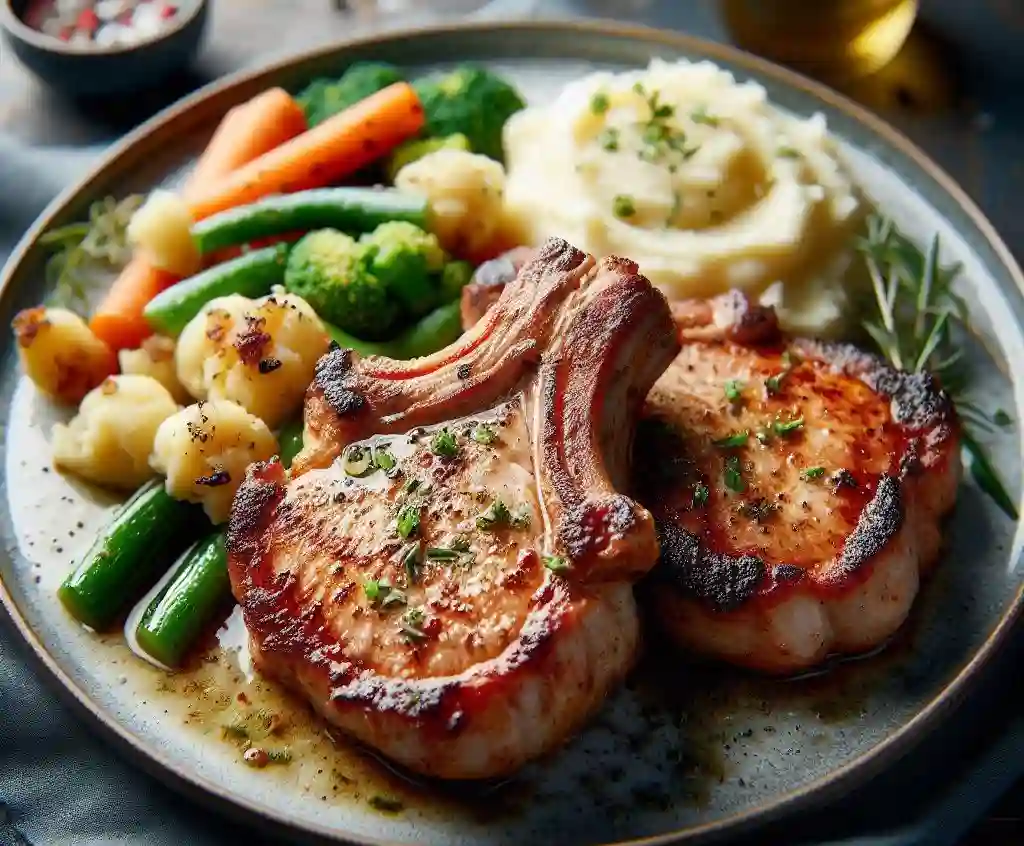
The Science of Salting
- Osmosis: Salt helps to break down the proteins in the meat, allowing it to retain more moisture and become more tender
- Denaturation: Salt helps to denature the proteins in the meat, making it more tender and less likely to become tough
How to Salt Your Pork Chops
- Dry brining: Rub the pork chops with kosher salt and let them sit for 30 minutes to 1 hour before rinsing and cooking
- Wet brining: Soak the pork chops in a saltwater brine (1 cup kosher salt per gallon of water) for 30 minutes to 2 hours before rinsing and cooking
- Curing: Rub the pork chops with a mixture of salt, sugar, and spices, and let them sit for several hours or overnight before rinsing and cooking
Benefits of Salting
- Tenderization: Salting helps to break down the proteins in the meat, making it more tender and less likely to become tough
- Moisture retention: Salting helps the meat to retain more moisture, making it juicier and more flavorful
- Flavor enhancement: Salting helps to bring out the natural flavors of the meat, making it more savory and delicious
Tips for Salting
- Use the right salt: Use kosher salt or another coarse salt, as it is easier to sprinkle evenly and provides better flavor
- Don’t over-salt: Use the right amount of salt for the size of your pork chops, and avoid over-salting, which can make the meat too salty
- Rinse and pat dry: Rinse the pork chops after salting and pat them dry with paper towels to remove excess moisture
- Let it sit: Let the salted pork chops sit for at least 30 minutes to allow the salt to penetrate the meat and do its magic
Common Salting Mistakes
- Not salting long enough: Not giving the salt enough time to penetrate the meat and do its magic
- Over-salting: Using too much salt, which can make the meat too salty and overpowering
- Not rinsing: Not rinsing the pork chops after salting, which can leave excess salt on the surface of the meat
Cooking Methods Compared: Grilling, Pan-Sealing, and Baking for Tender Pork Chops
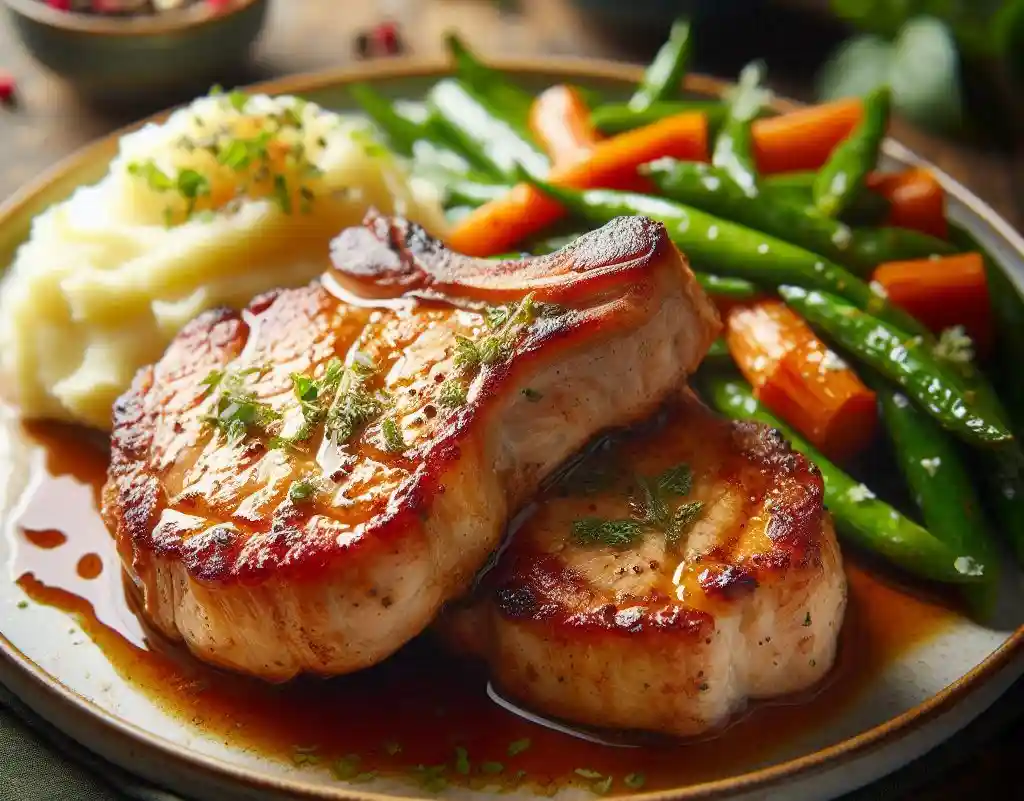
Grilling
- Pros:
- Adds a smoky flavor to the pork chops
- Can achieve a nice char on the outside
- Quick cooking time (4-5 minutes per side)
- Cons:
- Risk of overcooking or burning the outside before the inside is cooked
- Can be difficult to achieve even cooking, especially for thicker chops
- Requires constant attention to prevent flare-ups
Pan-Sealing
- Pros:
- Allows for a nice crust to form on the outside
- Can cook the pork chops quickly (2-3 minutes per side)
- Easy to achieve even cooking
- Can add aromatics like onions and garlic to the pan for added flavor
- Cons:
- Requires a hot skillet, which can be challenging to achieve
- Can be messy and require more cleanup
- Risk of overcooking the outside before the inside is cooked
Baking
- Pros:
- Easy to achieve even cooking and a tender interior
- Less risk of overcooking or burning the outside
- Can cook multiple pork chops at once
- Minimal cleanup required
- Cons:
- May not achieve the same level of browning as grilling or pan-sealing
- Can result in a less crispy exterior
- Longer cooking time (15-20 minutes)
Ultimate Tip:
- Regardless of the cooking method, make sure to cook the pork chops to an internal temperature of 145°F (63°C) to ensure food safety and tenderness.
How to Cook Boneless Pork Chops to the Perfect Internal Temperature
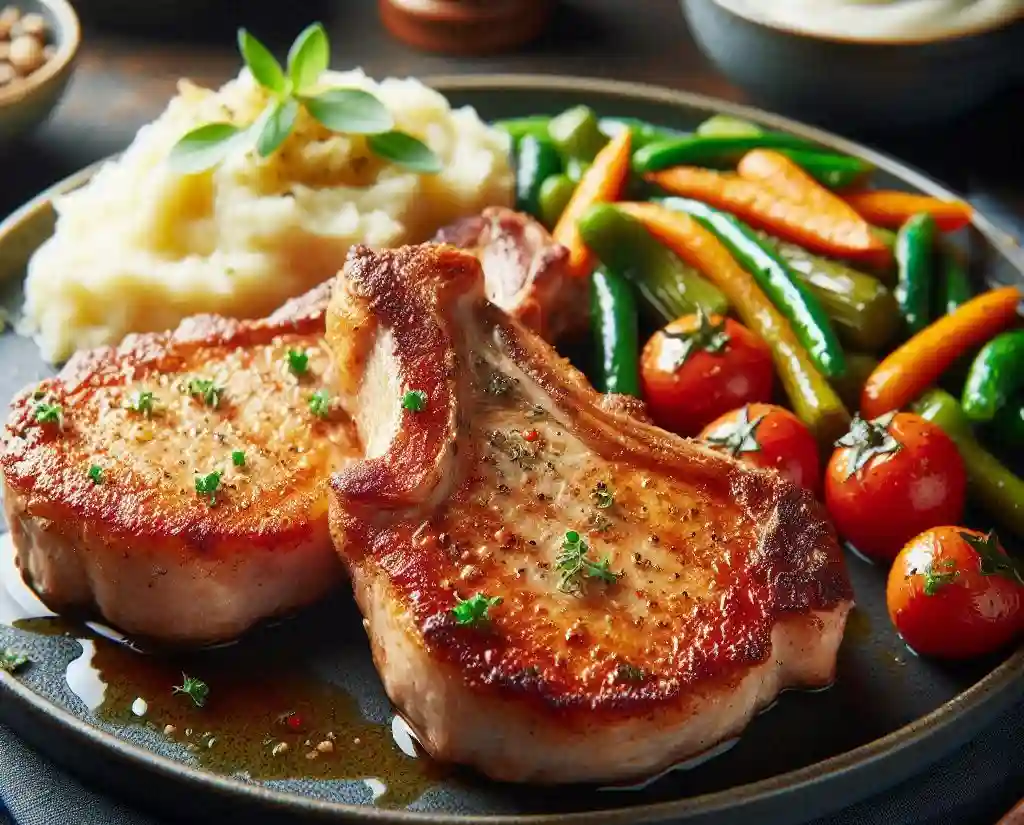
Understanding Internal Temperature:
- The recommended internal temperature for cooked pork chops is at least 145°F (63°C)
- Use a food thermometer to ensure the pork chops have reached a safe internal temperature
Cooking Methods and Internal Temperature:
- Grilling:
- Cook for 4-5 minutes per side, or until the internal temperature reaches 145°F (63°C)
- Pan-Sealing:
- Cook for 2-3 minutes per side, or until the internal temperature reaches 145°F (63°C)
- Baking:
- Cook for 15-20 minutes, or until the internal temperature reaches 145°F (63°C)
Tips for Achieving the Perfect Internal Temperature:
- Use a Meat Thermometer:
- Insert the thermometer into the thickest part of the pork chop, avoiding any fat or bone
- Wait for 10-15 seconds for the temperature to stabilize
- Don’t Overcook:
- Cook the pork chops until they reach the recommended internal temperature, but avoid overcooking
- Overcooking can make the pork chops dry and tough
- Let it Rest:
- Once the pork chops are cooked, let them rest for 5 minutes before serving
- This allows the juices to redistribute, making the pork chops more tender and flavorful
Common Mistakes to Avoid:
- Not Using a Thermometer:
- Relying on cooking time or visual cues can lead to undercooked or overcooked pork chops
- Not Letting it Rest:
- Skipping the resting step can result in dry and tough pork chops
- Overcooking:
- Cooking the pork chops beyond the recommended internal temperature can make them dry and tough
Avoiding the Most Common Mistakes: Tips for Cooking Tender Boneless Pork Chops Every Time
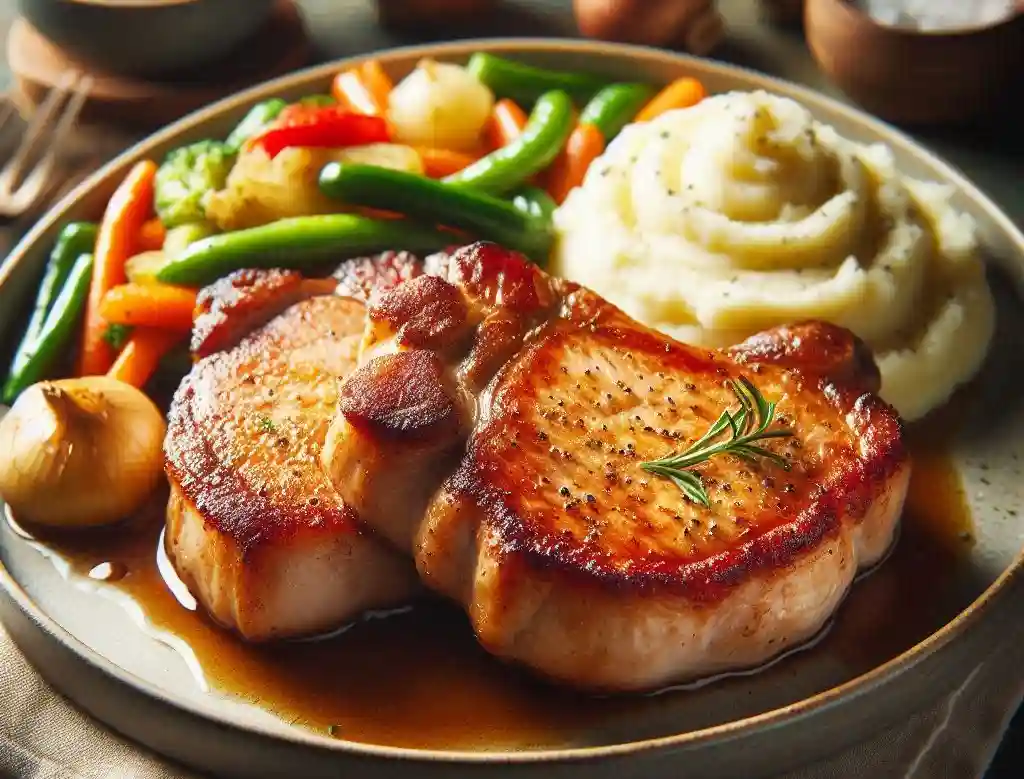
Mistake #1: Overcooking
- Solution:
- Use a meat thermometer to ensure the internal temperature reaches 145°F (63°C)
- Cook to the recommended internal temperature, but avoid overcooking
- Let the pork chops rest for 5 minutes before serving to allow the juices to redistribute
Mistake #2: Not Letting it Rest
- Solution:
- Let the pork chops rest for 5 minutes before serving to allow the juices to redistribute
- This helps the meat to retain its tenderness and flavor
Mistake #3: Not Bringing to Room Temperature
- Solution:
- Bring the pork chops to room temperature before cooking to ensure even cooking
- This helps the pork chops cook more evenly and prevents overcooking
Mistake #4: Not Patting Dry
- Solution:
- Pat the pork chops dry with paper towels before cooking to remove excess moisture
- This helps create a crispy crust on the outside and prevents steam from building up
Mistake #5: Not Cooking at the Right Temperature
- Solution:
- Cook the pork chops at the right temperature, whether it’s on the grill, in a pan, or in the oven
- Adjust the heat as needed to prevent overcooking or undercooking
Mistake #6: Not Using the Right Cooking Method
- Solution:
- Choose the right cooking method for the type of pork chops you’re using (e.g. grilling for thick chops, pan-searing for thin chops)
- Experiment with different cooking methods to find what works best for you
Mistake #7: Not Seasoning Properly
- Solution:
- Season the pork chops liberally with salt, pepper, and any other desired seasonings
- Let the seasonings sit on the pork chops for a few minutes before cooking to allow them to absorb
Advanced Techniques for Cooking Competition-Worthy Pork Chops
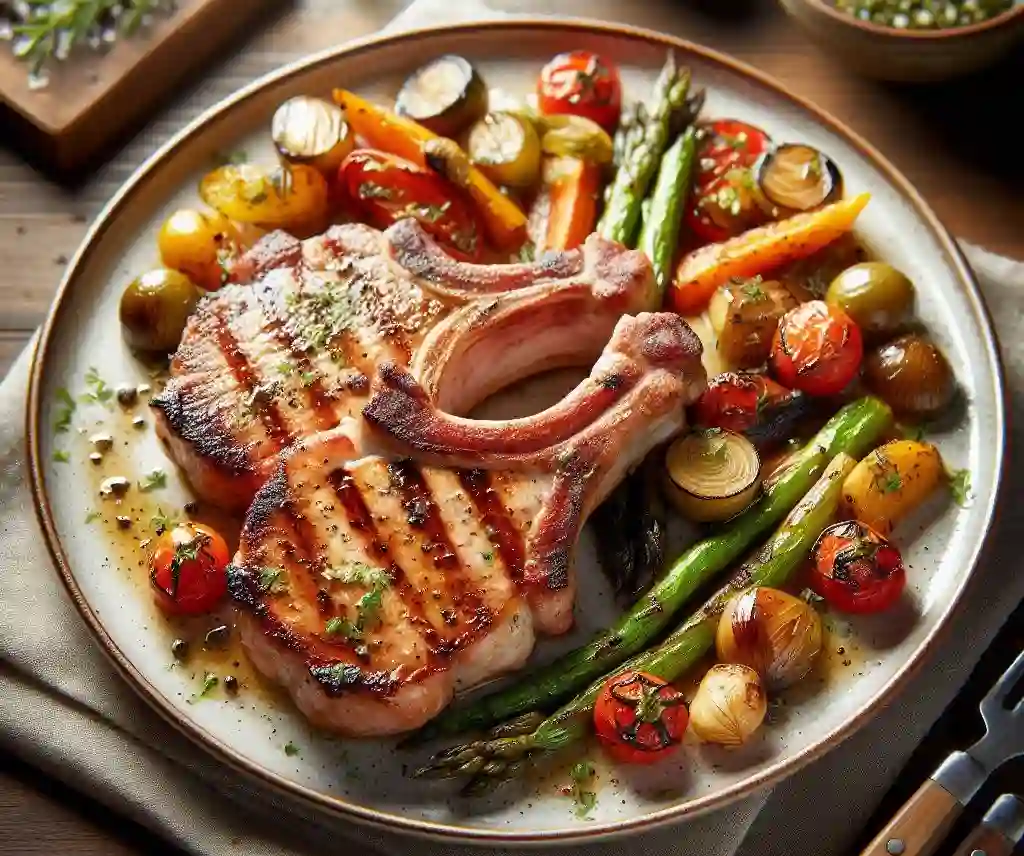
Dry Brining:
- What: A process of curing the pork chops in a mixture of salt, sugar, and spices to enhance flavor and tenderness
- How: Mix 1 cup of kosher salt, 1/2 cup of brown sugar, and 1 tablespoon of black pepper with 1 gallon of water to create a brine solution
- Tips: Use a food-safe container, refrigerate for 24-48 hours, and pat dry before cooking
Sous Vide Cooking:
- What: A method of cooking the pork chops in a water bath at a precise temperature to achieve perfect doneness
- How: Seal the pork chops in a sous vide bag with seasonings, then cook in a water bath at 130°F (54°C) for 1-2 hours
- Tips: Use a thermometer to ensure accurate temperature control, and sear the pork chops after cooking for added crust
Pan-Seared Crust:
- What: A technique for creating a crispy, caramelized crust on the pork chops
- How: Heat a skillet with oil over high heat, add the pork chops, and sear for 2-3 minutes per side
- Tips: Use a cast-iron or stainless steel skillet, and don’t stir the pork chops during the searing process
Wood-Fired Grilling:
- What: A method of grilling the pork chops over wood flames to add smoky flavor and texture
- How: Grill the pork chops over wood flames at 400°F (200°C) for 4-5 minutes per side
- Tips: Use a wood-fired grill or a charcoal grill with wood chips, and adjust the heat as needed to prevent burning
Glazing and Finishing:
- What: A technique for adding a sweet and sticky glaze to the pork chops during the last stages of cooking
- How: Brush the pork chops with a glaze made from ingredients like honey, soy sauce, and brown sugar during the last 10-15 minutes of cooking
- Tips: Use a thermometer to ensure the glaze is caramelized and sticky, and adjust the cooking time as needed
Plating and Presentation:
- What: The art of presenting the cooked pork chops in a visually appealing way
- How: Arrange the pork chops on a plate with garnishes like fresh herbs, microgreens, and sauces
- Tips: Consider the color palette, texture, and balance of the dish, and use garnishes to add depth and visual interest
FAQs
Q: What is the best way to cook pork chops?
A: The best way to cook pork chops is a matter of personal preference, but popular methods include grilling, pan-searing, and baking.
Q: How do I ensure my pork chops are tender and juicy?
A: To ensure tender and juicy pork chops, make sure to cook them to the recommended internal temperature of 145°F (63°C), don’t overcook them, and let them rest for 5 minutes before serving.
Q: Can I cook pork chops from frozen?
A: Yes, you can cook pork chops from frozen, but it’s recommended to thaw them first for more even cooking.
Q: How long do I need to cook pork chops?
A: The cooking time for pork chops depends on the thickness of the chops and the cooking method. As a general rule, cook pork chops for 4-5 minutes per side for grilling or pan-searing, and 15-20 minutes for baking.
Q: Can I use a meat thermometer to ensure my pork chops are cooked?
A: Yes, using a meat thermometer is the most accurate way to ensure your pork chops are cooked to a safe internal temperature.
Q: Can I marinate pork chops before cooking?
A: Yes, marinating pork chops can add flavor and tenderize them. Use a marinade with acidic ingredients like vinegar or lemon juice to help break down the proteins.
Q: Can I cook pork chops in a slow cooker?
A: Yes, cooking pork chops in a slow cooker is a great way to cook them low and slow. Simply season the pork chops, add your favorite sauce or broth, and cook on low for 6-8 hours.
Q: Can I cook pork chops in an air fryer?
A: Yes, cooking pork chops in an air fryer is a healthy and quick way to cook them. Simply season the pork chops, place them in the air fryer basket, and cook at 400°F (200°C) for 10-12 minutes.

Amelia Winthrop is the creative force behind Skillful Cooking, a blog that serves as a canvas for her culinary creations. With a philosophy that cooking should be accessible and enjoyable, Amelia crafts recipes that blend simplicity with sophistication. Her intuitive approach to the kitchen encourages others to embrace the joy of cooking and the pleasure of sharing meals with loved ones.

